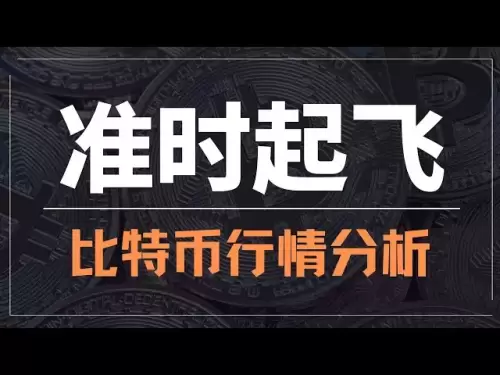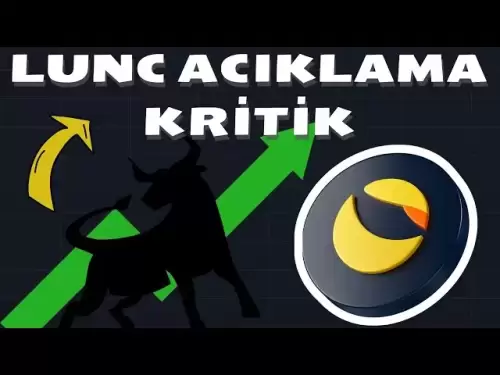-
 Bitcoin
Bitcoin $116400
0.87% -
 Ethereum
Ethereum $3819
3.86% -
 XRP
XRP $3.048
1.62% -
 Tether USDt
Tether USDt $1.000
0.03% -
 BNB
BNB $777.2
0.60% -
 Solana
Solana $169.3
0.46% -
 USDC
USDC $0.0000
0.02% -
 TRON
TRON $0.3414
2.06% -
 Dogecoin
Dogecoin $0.2126
3.33% -
 Cardano
Cardano $0.7527
1.21% -
 Hyperliquid
Hyperliquid $38.86
1.02% -
 Sui
Sui $3.683
5.27% -
 Stellar
Stellar $0.4048
1.45% -
 Chainlink
Chainlink $17.91
6.62% -
 Bitcoin Cash
Bitcoin Cash $576.9
1.29% -
 Hedera
Hedera $0.2487
1.03% -
 Ethena USDe
Ethena USDe $1.001
-0.01% -
 Avalanche
Avalanche $22.46
1.07% -
 Litecoin
Litecoin $120.8
1.69% -
 UNUS SED LEO
UNUS SED LEO $8.963
-0.30% -
 Toncoin
Toncoin $3.301
2.33% -
 Shiba Inu
Shiba Inu $0.00001250
1.13% -
 Uniswap
Uniswap $10.06
3.45% -
 Polkadot
Polkadot $3.731
1.56% -
 Dai
Dai $1.000
0.01% -
 Bitget Token
Bitget Token $4.416
1.58% -
 Cronos
Cronos $0.1482
3.73% -
 Monero
Monero $250.0
-12.34% -
 Pepe
Pepe $0.00001075
2.16% -
 Aave
Aave $274.6
4.17%
Introduction to Polkadot (DOT) investment: The complete process from registration to purchase
Polkadot (DOT) enables blockchain interoperability, making it a valuable investment; learn the full process from choosing an exchange to securing your DOT in a personal wallet.
Apr 10, 2025 at 09:21 pm

Introduction to Polkadot (DOT) Investment: The Complete Process from Registration to Purchase
Polkadot (DOT) has emerged as a significant player in the cryptocurrency market, offering a unique approach to blockchain interoperability. For those interested in investing in DOT, understanding the complete process from registration to purchase is crucial. This guide will walk you through each step, ensuring you have all the necessary information to make informed decisions.
Understanding Polkadot (DOT)
Before diving into the investment process, it's essential to understand what Polkadot is and why it might be a valuable addition to your cryptocurrency portfolio. Polkadot is a multi-chain blockchain platform that enables different blockchains to transfer messages and value in a trust-free fashion. Its native cryptocurrency, DOT, is used for governance, staking, and bonding within the network.
Polkadot's unique selling proposition is its ability to connect multiple specialized blockchains into one unified network. This interoperability can potentially lead to more efficient and scalable blockchain solutions, making DOT an attractive investment for those looking to diversify their crypto holdings.
Choosing a Cryptocurrency Exchange
The first step in investing in Polkadot (DOT) is to choose a reputable cryptocurrency exchange that supports DOT trading. Some of the most popular exchanges that list DOT include Binance, Kraken, and Coinbase. Each exchange has its own set of features, fees, and user interfaces, so it's important to choose one that aligns with your investment goals and preferences.
When selecting an exchange, consider factors such as security measures, user experience, available trading pairs, and fee structures. For beginners, exchanges with user-friendly interfaces and robust customer support can be particularly beneficial.
Registering on the Exchange
Once you've chosen an exchange, the next step is to register an account. Here's a detailed guide on how to register on a typical cryptocurrency exchange:
- Visit the Exchange Website: Navigate to the official website of the chosen exchange.
- Sign Up: Click on the "Sign Up" or "Register" button. You'll be prompted to enter your email address and create a strong password.
- Verify Your Email: After signing up, you'll receive an email with a verification link. Click on the link to verify your email address.
- Complete KYC Verification: Most exchanges require you to complete a Know Your Customer (KYC) process. This involves submitting personal identification documents such as a passport or driver's license, as well as proof of address.
- Enable Two-Factor Authentication (2FA): For added security, enable 2FA on your account. This typically involves using an authenticator app like Google Authenticator or Authy.
Depositing Funds
After successfully registering and verifying your account, the next step is to deposit funds into your exchange wallet. Here's how to do it:
- Navigate to the Deposit Section: Log into your exchange account and go to the "Deposit" or "Funds" section.
- Select Your Preferred Currency: Choose the currency you want to deposit, such as USD, EUR, or another cryptocurrency like Bitcoin or Ethereum.
- Generate a Deposit Address: The exchange will generate a unique deposit address for you. Copy this address.
- Transfer Funds: If you're depositing fiat currency, follow the exchange's instructions, which may involve bank transfers or using a payment processor. If you're depositing cryptocurrency, use the generated address to send funds from your external wallet to the exchange wallet.
- Wait for Confirmation: Once the funds are transferred, wait for the transaction to be confirmed on the blockchain or by the exchange. This can take anywhere from a few minutes to several hours, depending on the network congestion and the type of currency.
Purchasing Polkadot (DOT)
With funds in your exchange wallet, you're ready to purchase Polkadot (DOT). Here's how to do it:
- Navigate to the Trading Section: Go to the "Trade" or "Markets" section of the exchange.
- Select the DOT Trading Pair: Choose the trading pair that includes DOT, such as DOT/USD, DOT/BTC, or DOT/ETH.
- Place an Order: Decide whether you want to place a market order (buy at the current market price) or a limit order (buy at a specified price). Enter the amount of DOT you want to purchase and confirm the order.
- Review and Confirm: Double-check the details of your order, including the amount and price, and confirm the purchase.
- Monitor Your Order: Once the order is placed, monitor it until it's filled. You'll receive a notification once the purchase is complete.
Transferring DOT to a Personal Wallet
For added security, it's advisable to transfer your purchased DOT to a personal wallet rather than leaving it on the exchange. Here's how to do it:
- Choose a Wallet: Select a wallet that supports DOT, such as the official Polkadot.js wallet, Ledger hardware wallet, or other compatible software wallets.
- Generate a Receiving Address: In your chosen wallet, generate a new receiving address for DOT.
- Initiate the Withdrawal: Go back to the exchange and navigate to the "Withdraw" or "Send" section. Enter the amount of DOT you want to withdraw and the receiving address from your personal wallet.
- Confirm the Withdrawal: Review the withdrawal details and confirm the transaction. You may need to enter a 2FA code to proceed.
- Wait for Confirmation: The withdrawal process can take some time, depending on the network congestion. Once the transaction is confirmed, the DOT will appear in your personal wallet.
Frequently Asked Questions
Q: Can I buy Polkadot (DOT) with a credit card?
A: Yes, some exchanges like Binance and Coinbase allow you to purchase DOT directly with a credit card. However, be aware that using a credit card may incur higher fees compared to other payment methods.
Q: What are the risks associated with investing in Polkadot (DOT)?
A: Like any cryptocurrency investment, investing in DOT carries risks such as market volatility, regulatory changes, and potential security breaches. It's important to conduct thorough research and only invest what you can afford to lose.
Q: How can I stay updated on Polkadot (DOT) developments?
A: To stay informed about Polkadot, you can follow the official Polkadot blog, join their community on social media platforms like Twitter and Reddit, and subscribe to newsletters from reputable cryptocurrency news sources.
Q: Is it necessary to stake my DOT tokens?
A: Staking DOT tokens is optional but can be beneficial as it allows you to participate in the network's governance and earn rewards. However, staking requires you to lock up your tokens for a certain period, so consider your investment strategy before deciding to stake.
Disclaimer:info@kdj.com
The information provided is not trading advice. kdj.com does not assume any responsibility for any investments made based on the information provided in this article. Cryptocurrencies are highly volatile and it is highly recommended that you invest with caution after thorough research!
If you believe that the content used on this website infringes your copyright, please contact us immediately (info@kdj.com) and we will delete it promptly.
- Pi Coin's dApp and AI Potential: Building a Decentralized Future
- 2025-08-08 02:30:12
- Bitcoin, Greenidge, and Liquidity: Navigating the Crypto Currents in NYC
- 2025-08-08 02:30:12
- Crypto Phishing Alert: $3 Million USDT Loss Highlights DeFi Risks
- 2025-08-08 01:10:12
- Crypto Presale Mania: Is Punisher Coin the High ROI King?
- 2025-08-08 01:10:12
- Online Betting, Platforms & Crypto Access: What's Hot in 2025
- 2025-08-08 00:50:12
- Layer Brett: The Meme Coin Primed for 100x Gains?
- 2025-08-08 01:50:12
Related knowledge

How to avoid common crypto investment mistakes?
Jul 13,2025 at 01:35am
Understanding the Risks of Crypto InvestmentInvesting in cryptocurrency can be highly rewarding, but it also comes with significant risks. One of the ...

What is a long-short crypto strategy?
Jul 15,2025 at 10:56am
Understanding the Basics of a Long-Short Crypto StrategyA long-short crypto strategy is an investment approach where traders simultaneously take long ...

What is a long-short crypto strategy?
Jul 11,2025 at 01:28pm
Understanding the Basics of Long-Short Crypto StrategyA long-short crypto strategy is an investment approach where traders take both long and short po...

How to use the RSI indicator for crypto?
Jul 12,2025 at 03:56pm
Understanding the RSI Indicator in Cryptocurrency TradingThe Relative Strength Index (RSI) is a momentum oscillator used to measure the speed and chan...

Is copy trading a good strategy for crypto beginners?
Jul 12,2025 at 08:28am
Understanding Copy Trading in the Cryptocurrency MarketCopy trading is a strategy where novice traders replicate the trades of experienced investors a...

How to build a crypto portfolio with $1000?
Jul 13,2025 at 08:14pm
Understanding the Basics of Cryptocurrency InvestmentBuilding a crypto portfolio with $1000 starts with understanding the fundamentals of cryptocurren...

How to avoid common crypto investment mistakes?
Jul 13,2025 at 01:35am
Understanding the Risks of Crypto InvestmentInvesting in cryptocurrency can be highly rewarding, but it also comes with significant risks. One of the ...

What is a long-short crypto strategy?
Jul 15,2025 at 10:56am
Understanding the Basics of a Long-Short Crypto StrategyA long-short crypto strategy is an investment approach where traders simultaneously take long ...

What is a long-short crypto strategy?
Jul 11,2025 at 01:28pm
Understanding the Basics of Long-Short Crypto StrategyA long-short crypto strategy is an investment approach where traders take both long and short po...

How to use the RSI indicator for crypto?
Jul 12,2025 at 03:56pm
Understanding the RSI Indicator in Cryptocurrency TradingThe Relative Strength Index (RSI) is a momentum oscillator used to measure the speed and chan...

Is copy trading a good strategy for crypto beginners?
Jul 12,2025 at 08:28am
Understanding Copy Trading in the Cryptocurrency MarketCopy trading is a strategy where novice traders replicate the trades of experienced investors a...

How to build a crypto portfolio with $1000?
Jul 13,2025 at 08:14pm
Understanding the Basics of Cryptocurrency InvestmentBuilding a crypto portfolio with $1000 starts with understanding the fundamentals of cryptocurren...
See all articles

























































































